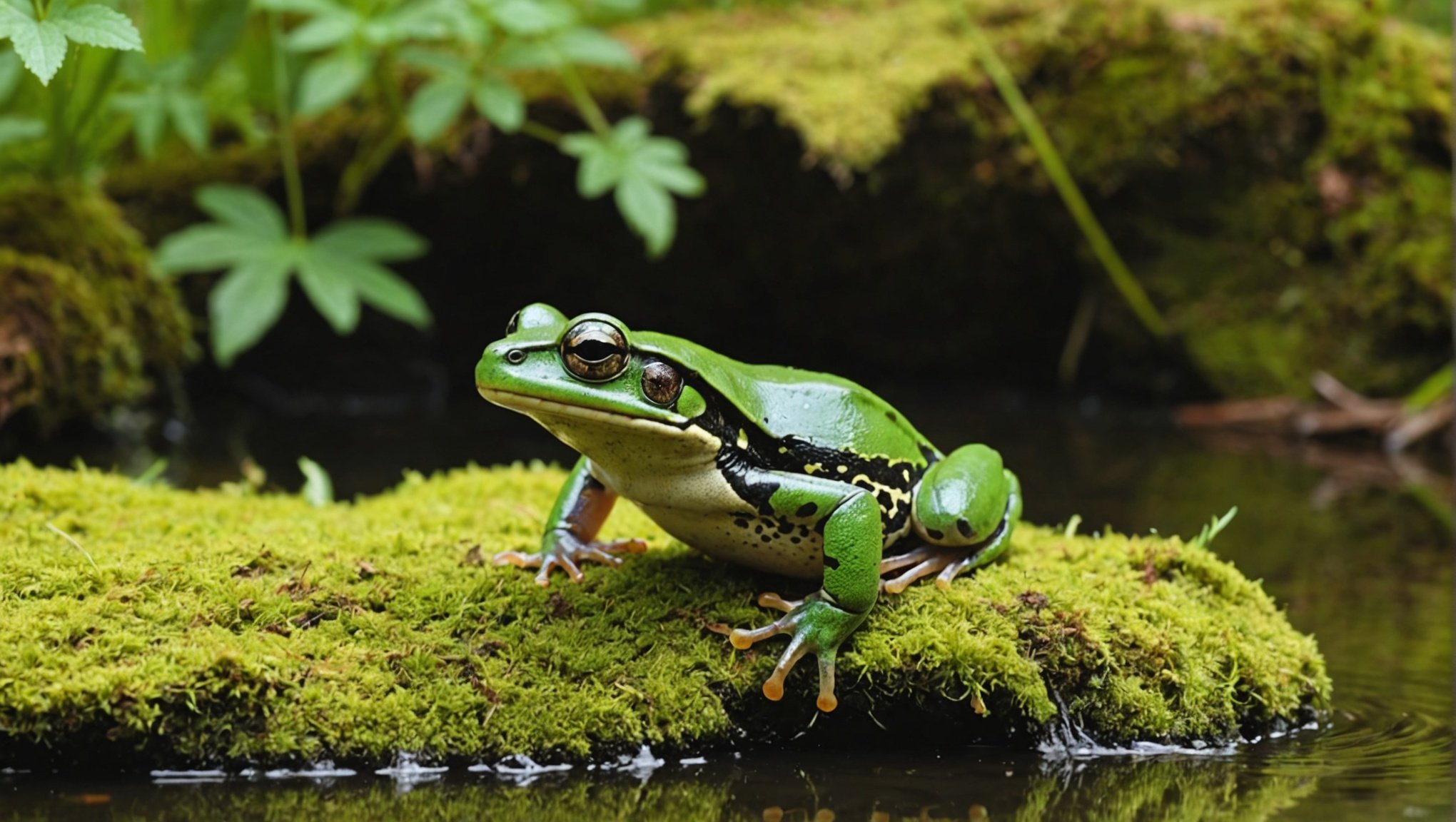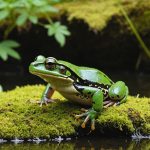Overview of UK Water Quality Regulations
In the quest for pristine waterways, UK water quality regulations have evolved significantly. Initially guided by basic sanitary needs, these regulations now align with comprehensive environmental legislation. As understanding of aquatic ecosystems deepened, priorities shifted towards safeguarding biodiversity and ensuring adaptable policies for dynamic challenges.
Historically, the regulations originated with the 19th-century Public Health Acts, initiating public water safety protocols. Over time, they broadened to encompass modern directives, such as the Water Framework Directive, which emphasizes integrated river basin management.
A découvrir également : Boosting Ground-Nesting Bird Conservation: The Role of Controlled Burns in the UK”s Heathlands
Key legislation today includes the Environment Act 1995 and the Water Resources Act 1991, both pivotal in setting stringent parameters for pollutants to ensure the robust protection of aquatic life. These legal frameworks mandate periodic assessments and adaptive strategies, which are crucial in addressing emerging pollutants and climate-induced changes.
Objectives of current regulations are multifaceted, aimed at improving water standards not only for human consumption but also for aquatic life protection. By focusing on pollutant control and habitat restoration, the regulations seek to foster thriving ecosystems. Through stringent implementation and continuous updates to align with scientific advancements, these regulations maintain balance between developmental needs and ecological preservation.
A lire également : Exploring the UK”s Efforts to Assess Air Pollution”s Impact on Avian Habitats in Industrial Areas
Importance of Water Quality for Amphibian Breeding
The reproductive success of amphibians is intricately tied to the water quality in their habitats. High-quality water is crucial for the survival and development of eggs and larvae, significantly influencing amphibian reproduction. Pollutants such as pesticides and heavy metals can disrupt the delicate balance of aquatic ecosystems, resulting in dire consequences for reproductive processes.
Nutrient levels play a paramount role in the health of amphibian breeding grounds. Excess nutrients can lead to algal blooms, depleting oxygen levels in the water and causing harm to eggs and tadpoles. Conversely, certain nutrient deficiencies can affect the growth and development of these organisms. Maintaining a balanced ecosystem is essential for the proper progression through different lifecycle stages, from egg to adult.
Water quality also impacts various stages of the amphibian lifecycle. Poor water conditions can result in anomalies during metamorphosis or decreased survival rates of young amphibians. A clean, pollutant-free habitat ensures the growth of a thriving amphibian population, sustaining biodiversity.
To enhance amphibian reproduction and habitat quality, monitoring and improving water quality in aquatic ecosystems is critical. Through conservation efforts focused on reducing pollutants and managing nutrient levels, healthier environments are created, supporting the intricate lifecycle of amphibians.
Current State of Amphibian Breeding Habitats in the UK
Amphibian habitats in the UK have been the focus of considerable current research, which aims to understand the implications for key species. Among these species, the common toad, smooth newt, and great crested newt occupy wetlands and ponds as their primary breeding sites. Understanding the fragility of these habitats is crucial for effective conservation.
Recent ecological assessments provide insight into the current state of these environments. These studies indicate that many amphibian habitats are under pressure due to urbanisation, pollution, and climate change. For instance, the loss and degradation of traditional breeding sites due to development have been frequently highlighted, threatening the species’ ability to reproduce effectively.
One of the significant challenges faced by amphibians in these environments is the alteration of water bodies. Increased water contamination and altered hydrology impact breeding cycles and the viability of populations. Moreover, these environmental changes have led to a decline in the suitable habitat available, pushing some species towards localised extinctions.
Efforts to mitigate these issues include habitat restoration projects and policy implementations that prioritise ecological health. An approach that combines current research insights with practical conservation strategies is quintessential for improving and securing amphibian habitats‘ future viability.
Implications of Water Quality Regulations on Amphibian Populations
When examining the regulatory impact on amphibian species, understanding its influence on population dynamics is crucial. Regulations aim to enhance water quality, thereby providing safer habitats for amphibians to breed and thrive. But, how effective are these regulations in practice? To assess this, we examine both the successes and failures of these frameworks.
Amphibian species, such as frogs and salamanders, are highly sensitive to water conditions. This makes them ideal indicators of environmental health. In some cases, stringent regulations have resulted in notable improvements in breeding success, showcasing a positive regulatory impact. For instance, specific regions have reported increased populations and healthier habitats after implementing water quality standards. These successes underscore the importance of regulatory measures in sustaining biodiversity.
However, not all regulations yield desirable outcomes. Instances where regulations fail often involve insufficient enforcement or gaps in the regulatory framework. These failures can lead to declining amphibian populations, highlighting the need for continuous evaluation and adjustment of policies.
The potential long-term impacts of water quality regulations are evidently significant. While they can foster positive population dynamics by protecting and enhancing breeding environments, ongoing research and case studies remain vital. These help ensure that regulatory frameworks address the evolving challenges facing amphibian species, securing their future in diverse ecosystems.
Biodiversity and Ecosystem Consequences
Biodiversity loss poses a significant threat to ecosystem health. One of the key indicators of this phenomenon is the declining health of amphibian populations. Amphibians, often considered environmental indicators, are sensitive to changes in their surroundings, and declining amphibian health can signal broader ecological issues. They play a crucial role in interspecies interactions, serving as both predator and prey within their ecosystems. Healthy amphibian populations contribute to the balance of ecosystems by regulating insect populations and providing food for higher trophic levels.
Water quality plays an integral role in supporting these creatures and, by extension, the species that rely on healthy amphibian populations for survival. Clean, unpolluted water is crucial for the reproduction and development of amphibians, which are among the most water-dependent vertebrates during their life cycle stages. Poor water quality can severely disrupt these dynamics, influencing other species’ habitats negatively.
Furthermore, ecosystems benefit from the services provided by healthy amphibian populations. These include pest control by feeding on insects that potentially spread diseases, such as mosquitoes. By maintaining amphibian health and indirectly ensuring ecosystem services, we support overall biodiversity and ecosystem health, demonstrating how interconnected ecological processes are and the importance of maintaining them.
Recommendations for Improved Conservation Practices
Conservation strategies play a crucial role in safeguarding amphibian populations and their habitats. One key approach is habitat restoration, which involves recreating and maintaining environments conducive to amphibian breeding. Effective habitat restoration may include establishing vegetation buffers along water bodies, managing invasive species, and creating breeding ponds. This approach ensures a supportive ecosystem, encouraging population growth and biodiversity.
Moving on to policy recommendations, strengthening water quality regulations is imperative. Pollutants and contaminants adversely impact amphibians, which are highly sensitive to environmental changes. Regulatory bodies can implement stricter guidelines on industrial waste disposal and promote sustainable agricultural practices to minimize runoff. Ensuring clean water sustains amphibian life and, concurrently, promotes human and environmental health.
Community engagement is another vital aspect of conservation efforts. Investing in education and raising awareness can empower communities to actively participate in protecting local ecosystems. Workshops, citizen science projects, and volunteer programs can foster a sense of responsibility and collective action. Encouraging local stewardship not only enhances conservation outcomes but also provides valuable data and insight for ongoing initiatives.
In summary, integrating habitat restoration, robust policy recommendations, and community engagement forms a comprehensive conservation strategy that addresses current challenges while promising long-term sustainability and health of amphibian populations.
Future Directions in Research and Policy
The field of future research concerning water quality and amphibians is vibrant and continuously evolving. Significant emerging trends are worth noting. Among these, the integration of advanced technology into environmental monitoring is fundamental. This includes using innovative bio-sensors that more precisely characterise water pollutants affecting amphibian habitats.
Understanding the pivotal role of environmental monitoring, ongoing efforts are directed at enhancing the accuracy and coverage of monitoring systems to ensure that subtle changes in water quality are detected promptly. Monitoring must be paired with effective regulatory frameworks. Current regulations need regular assessment to adapt to new scientific findings and address growing environmental challenges.
Collaboration is vital for effective implementation of these frameworks. It involves collective action by scientists, policymakers, and conservationists. These stakeholders work in harmony to form and refine policies that protect amphibian populations and maintain ecosystem health. Such collaborative efforts ensure that regulations are not only based on the best available science but are also practical and enforceable.
To foster further progress in this area, it is crucial to continue bridging gaps between research and policy. This will lead to more adaptive management strategies that align scientific advancements with regulatory needs.











